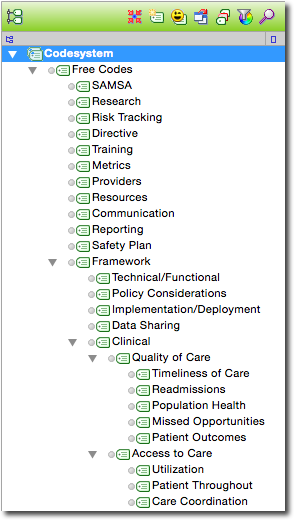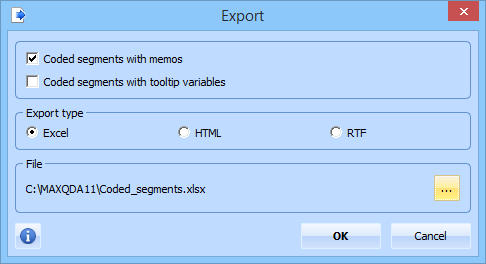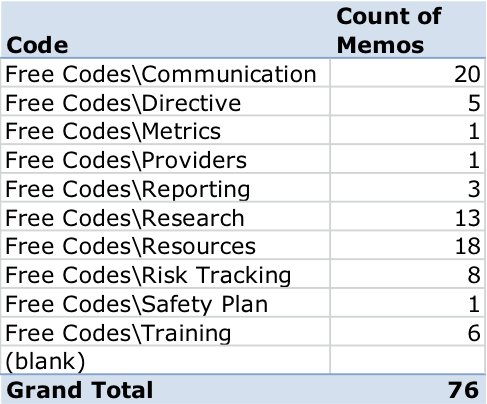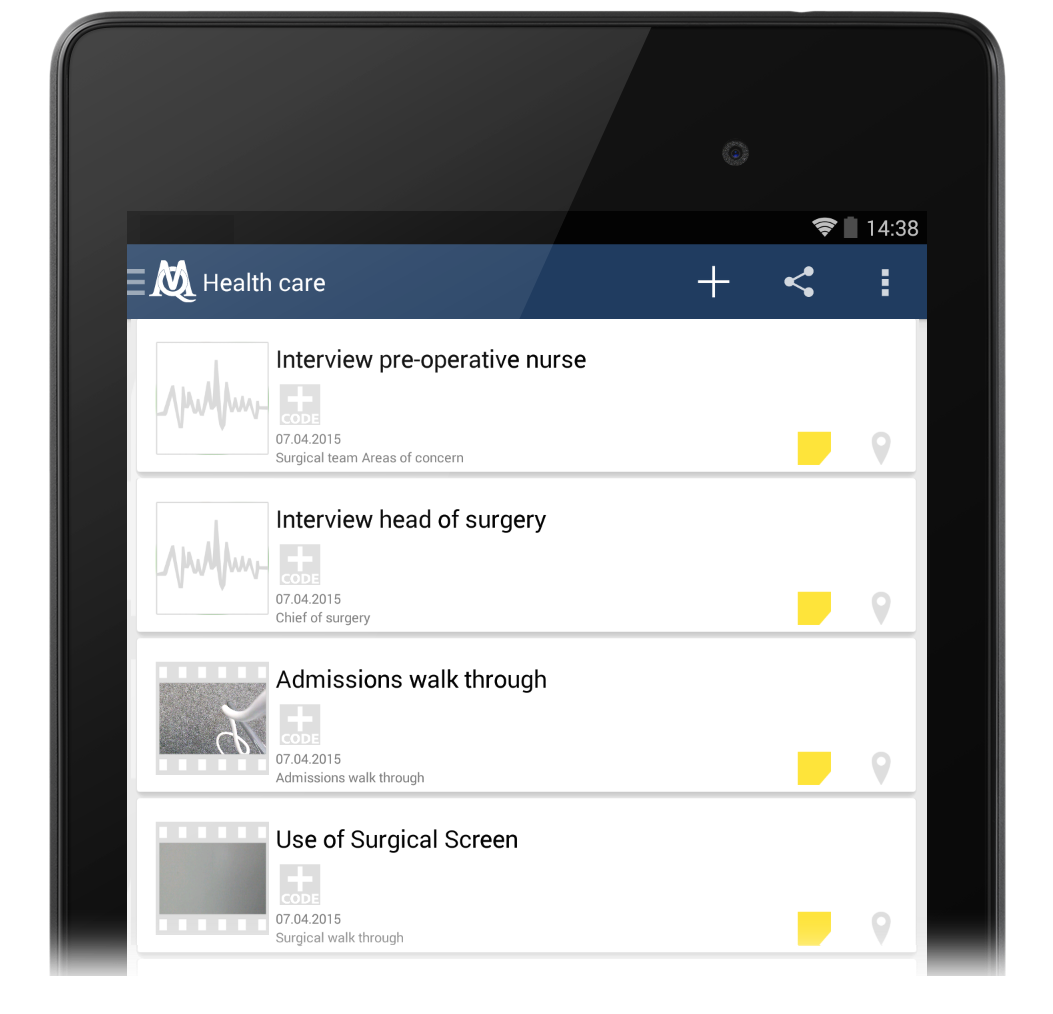This article is a guest post by Matthew Loxton, Senior Healthcare Analyst with WBB Inc. Matthew outlines how his team uses MAXQDA and MAXApp in their research which focuses on improving IT deployment and administrative and clinical workflow in the health industry working with a variety of data types.
The Industry Environment
The healthcare industry is a high-stakes knowledge game. A well-executed good idea can save lives, but a bad idea or a poor execution can cost lives. This is borne out across almost every facet of healthcare from surgical and medical care delivery, to drug design and prescription, to administration, pricing, and service planning. Although healthcare is a highly collegial profession and practitioners are very willing to share ideas, good ideas often move very slowly or remain isolated and underutilized. Truly, the road from Florence Nightingale and Ignatz Semelweiss to today is paved with the gravestones resulting from medical mistakes and missed opportunities.
Lessons Learned
Knowledge management (KM) includes methods to speed up the process of knowledge consolidation, dissemination, and re-use. One KM method that has proven to be very effective in the healthcare environment is the “lessons learned” approach. The lessons learned approach involves using the experiences of clinicians, administrative staff, and management to identify reusable lessons that can assist in replicating good ideas and avoiding previously encountered pitfalls.

Qualitative Analysis Team
Our team works as an external facilitator of lessons learned for a large healthcare system. The healthcare system comprises over 150 medical centers that range from small transfusion units and rural clinics to large tertiary hospitals. The lessons learned program exists within a greater quality and safety program that performs measurement and evaluation, and the team focuses on lessons learned related to health information technology (IT), clinical workflow, and administrative processes. The focus remains within the boundaries of cost, safety, and effectiveness of the IT, workflow, or processes, with an emphasis on effectiveness. In short, we want to know what was found to be effective or ineffective, so that subsequent efforts can repeat the effective methods and avoid the pitfalls of the ineffective.
Methodology
The team utilizes mixed methods to examine existing records, interview stakeholders, and synthesize lessons and recommendations. The process typically involves reviewing the organizational goals and their associated metrics, analysis of the related workflow and business processes, and identification of the roles and activities involved. The roles identify the people who are to be interviewed and the topics to be covered, respectively.
Prior to site visits or interviews, a literature review is carried out, and is integrated with an existing corpus that aligns with a MAXQDA code system. The corpus includes categorization of stages of application or process implementation, a measurement framework, and a healthcare category structure.

Combined codes from an Suicide Prevention program
Interview Preparation
Codes that emerge during analysis of the texts are added as Free Codes, and questions and topics that the team wishes to pursue with participants are drawn up within MAXQDA. Questions are developed by coding a text segment, and then adding the questions in a MAXQDA memo attached to the segment. This enables the team to generate a list of questions along with the associated code and text segments. It is easy to keep track of questions that need to be pursued, along with the codes and associated text segments by using the MAXQDA export function and selecting the “Coded segments with memos” option.

Export of coded segments and memos
Once the codes, memos, and associated text segments are exported in csv format, the team is able to tabulate and explore the data by means of Excel pivot tables.

Excel Pivot Table of codes from a clinical program
Interview Execution
Individual coded segments and associated questions are listed and ticked off unobtrusively during interviews as the participants provide clarifying information. If the participants do not cover the topic in a way that provides an answer without prompting, then the question can be posed directly and the text segment can be used as a context (as required). This has proven to be a highly effective approach, and minimizes the potential for leading the participant.

Question and retrieved segment context
Interviews are carried out at medical centers, or telephonically. While face-to-face interviews are preferred, the travel costs are often prohibitive. The interviews typically explore the participant’s involvement and background, and then step through what the participant felt were examples of effective and notably ineffective methods, and what they believe should be done differently in future.
Data Types
The output of interviews and site visits may comprise any combination of the following forms of qualitative data:
Data Analysis
With the increased functionality of smartphones, audio, video, and still images can be pre-coded using MAXApp. The pre-coding can be efficiently done between interviews and in transit, where using a PC is impractical. In some cases, typed notes captured on a PC were accessed on an Android tablet via cloud storage. On occasion hand-written notes and hardcopy images have been captured electronically on the smartphone. The MAXApp functionality enabled a considerable contraction in total time taken to code, but also enabled coding to be done while the interviewer’s memory was still fresh.

MAXApp view of field coding
Building Lessons
Building the lessons involves a recursive process of reading the documents, watching videos, listening to audio, and reviewing still images from within MAXQDA. Segments are coded as a story of a lesson emerges, and are combined with pre-coded segments in order to build each lesson. Each lesson follows a form of “A caused B” in which an event, action, policy etc. resulted in a specific outcome. For example, a lesson might emerge that a lack of site planning (“A”), resulted in inability to conduct effective training (“B”). A suitable explanatory title is composed, and the context in which it occurred is constructed from the coded segments. These are typically examples of situations at the facility or event in question, as well as examples from the literature review of other facilities or previous events.
Each lesson strives to show a clear outcome that is measurable, (or at least identifiable), and addresses a risk, issue, situation, or crisis. Depending on the individual case, the outcome may be either a good or a bad result of the named cause. For example, a lesson may describe that effective planning resulted in a good selection of training environment for a specific health IT application. The lesson would then describe what benefit this had on clinical use, and the context in which the selection occurred. The context may speak to the existence of a good Wi-Fi signal, sufficient lighting, and adequate ventillation for training purposes.
In another lesson, the lack of interoperability of electronic health records may be identified as a cause of nurses needing to copy and paste between applications, with a resulting risk that chunks could be accidentally transferred between two different patients. The lessons are used by facility management and project planners to inform policy decisions, and to reduce project risks.
Conclusion
The use of MAXApp and MAXQDA has made the process of data analysis, qualitative data capture, and synthesis of lessons more efficient. Integration of different media types has been made easier, and saves time. Having word count, lexical search, and coding features within MAXQDA enables the team to notice relationships, and to bring disparate content under common codes. As a result, the lessons are brought to bear sooner, and the content quality is improved.

About Matthew Loxton
This article was written by Matthew Loxton, a Senior Healthcare Analyst with WBB Inc, performing process improvement (PI), quality improvement (QI), and measurement & evaluation (M&E) engagements with healthcare systems and medical facilities. Matthew uses a mixture of Knowledge Management and Lean Six Sigma to improve Health IT deployment and administrative and clinical workflow.




